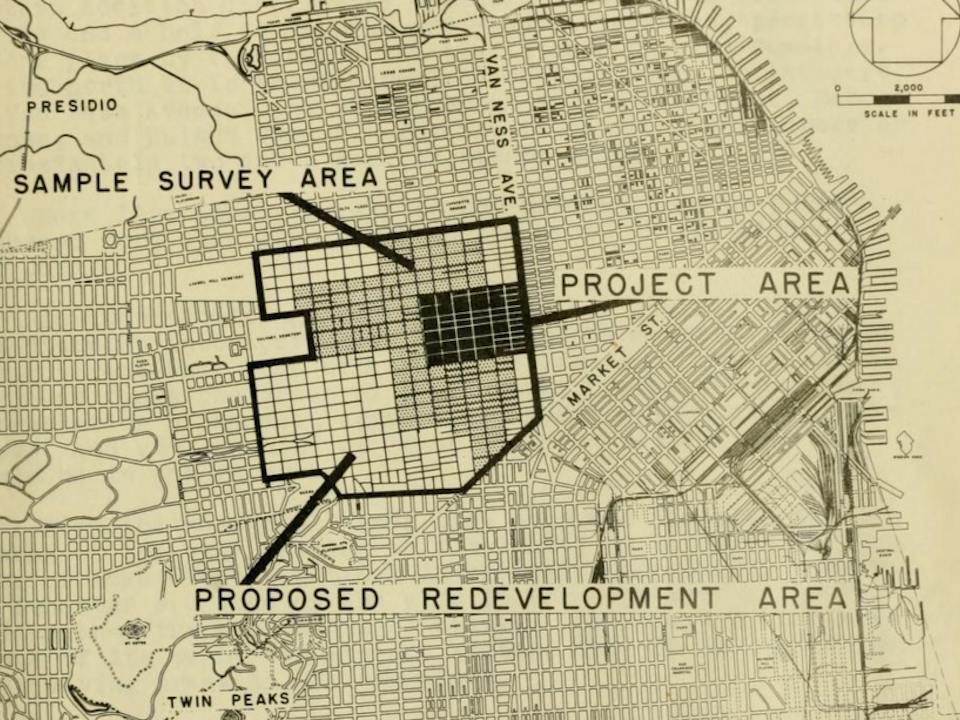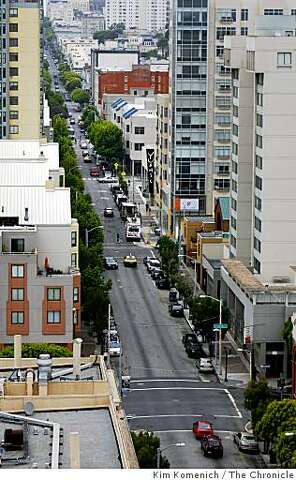If by "areas", you count neighborhoods, I'd call attention to San Francisco's Fillmore District.
In the post-war era, the city designated the Fillmore, which some had previously called "the Harlem of the West" as a redevelopment project area:

Previously, the area had looked like this:

Above 2 images:
https://hoodline.com/2016/01/how-urb...der-to-save-it
So the bulldozers went to work:
 https://hoodline.com/2016/01/how-urb...d-the-fillmore
https://hoodline.com/2016/01/how-urb...d-the-fillmore
And physically, the neighborhood was largely rebuilt:
 https://www.google.com/search?rls=en...fsf3Ym93x69hM:
https://www.google.com/search?rls=en...fsf3Ym93x69hM:
But many of the newly built storefronts have had repeated business failures. Eventually, in the 1990s, the city designated the area a "jazz preservation district" in order to try to restore some of the pre-"redevelopment" jazz clubs and nightlife. That too has been pretty much a failure. Upon closing his club, one business owner wrote the Mayor:
Quote:
In the early 1990’s, Mayor Frank Jordan, responding to a groundswell of discontent from the African American business community that the Western Addition A-2 Redevelopment Project (“A-2”) had decimated the few African American businesses along Fillmore Street, established the Fillmore /Western Addition Economic Development Task Force ( “Task Force”) to work collaboratively with the San Francisco Redevelopment Agency to devise a program to salvage some semblance of a commercial life for African American businesses in the Fillmore corridor (Fillmore from Geary Boulevard to Turk Street). The Task Force—a genuinely dedicated, intelligent, and energetic group—labored tirelessly with the Redevelopment Agency staff and Commission to formulate a plan and program to create a framework for African American entrepreneurship on Fillmore Street. From this collaborative effort, the Old Fillmore Jazz Preservation District (“Jazz Preservation District”) was created; it was proclaimed with much fanfare as an official policy program of the City and County of San Francisco.
Having successfully owned and operated a business/entertainment enterprise on the corner of California and Divisadero Street for several years that corresponded to the theme of the proposed Jazz Preservation District, I was approached by the Redevelopment Agency to participate in the revitalization effort on Fillmore Street. In October 1999, I opened Rasselas at 1534 Fillmore Street. For several years mine was the lone commercial establishment in the Jazz Preservation District. From the outset, the enthusiasm, support and encouragement from the Task Force was not matched by some key Redevelopment Agency staff.
Many times, I felt as if certain Agency staff wanted me to fail. Once I opened Rasselas there was, in my opinion, a demonstrable lack of energy and interest by the Agency staff to follow through on important policies and programs that were essential for the success of the Jazz Preservation District as well as my own business. In a report to the Agency Commission in 1995 then Executive Director Clifford Graves, stated that the success and sustainability of the Jazz Preservation District required, among other things, that recruitment of theme and supporting tenants is essential and that “financing sources” and “financing methods” associated with the unique environment of lower Fillmore Street must be devised; this call to pro-active and creative support from the City and County of San Francisco was never materialized in my opinion. To this day, I never felt a shared sense of interest with the Agency staff. Further, in my view, the Successor Agency staff has done little to promote and advance the ambitious goals of the Jazz Preservation District concept.
|
https://insidescoopsf.sfgate.com/blo...strict-vision/
But to this day, the area's businesses seem tenuous and the area is something of a backwater rather than a center of vibrant African-American life. Overall, San Francisco itself has been so successful and housing in such short supply that the residential buildings in this neighborhood are filled just as buildings all over the city are. But the main shopping street still has a slightly seedy feel and not much to attract anyone from outside the neighborhood (which distinguishes it from most of the other neighborhood "high streets" in town or even the same street farther to the north outside the area that was "redeveloped") except one of the few buildings NOT bulldozed, the Fillmore Auditorium which still host popular music events.



